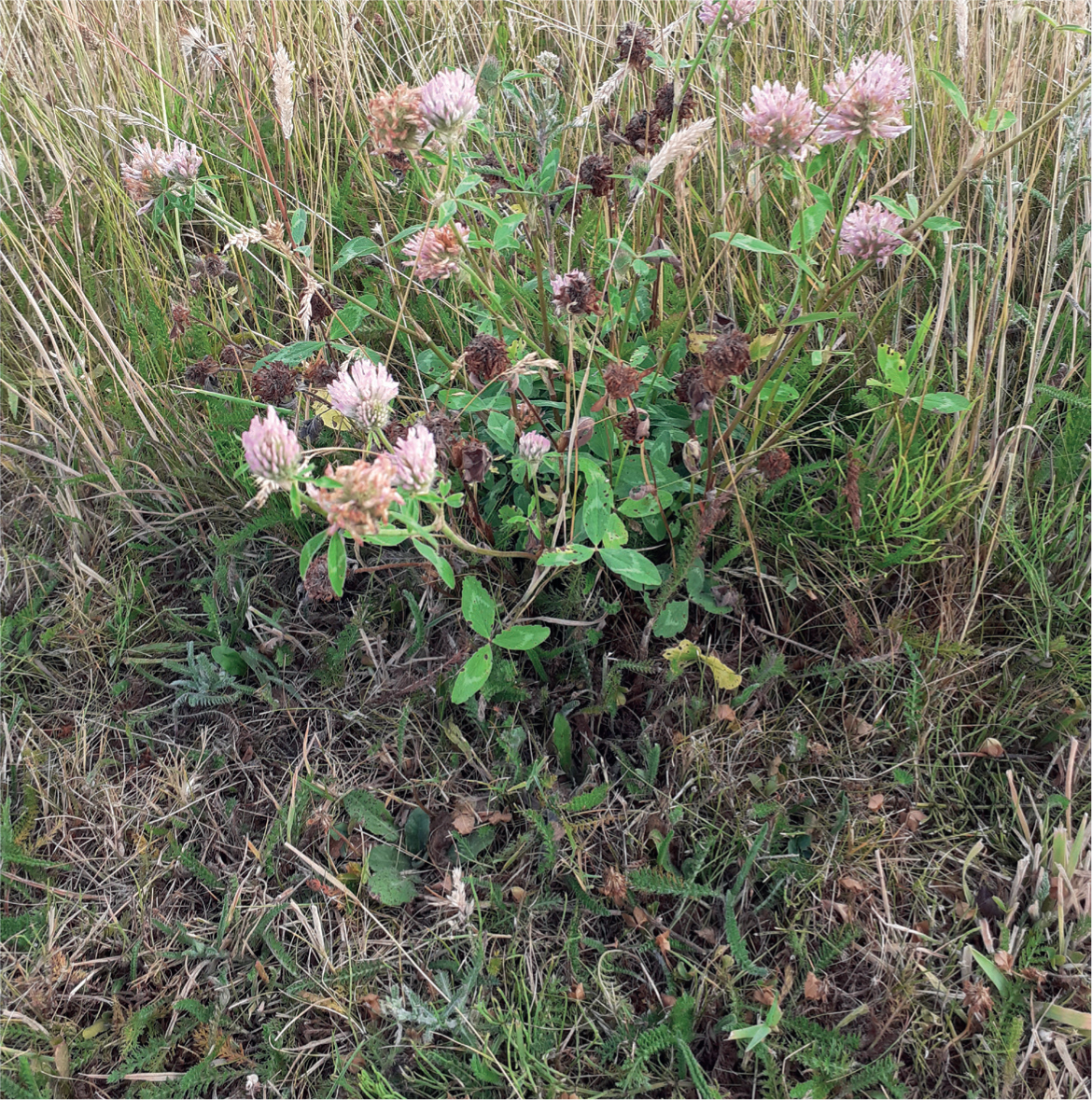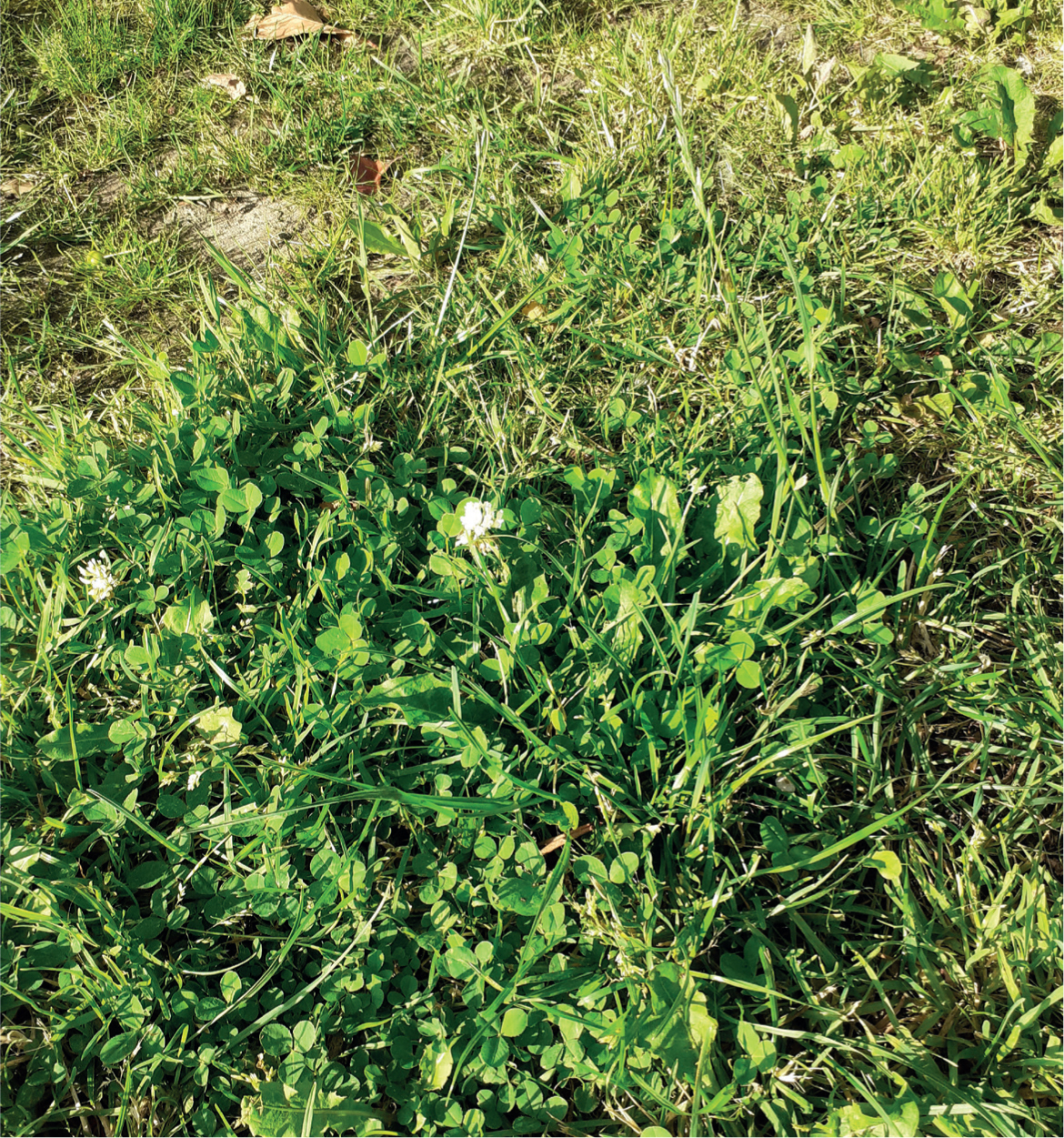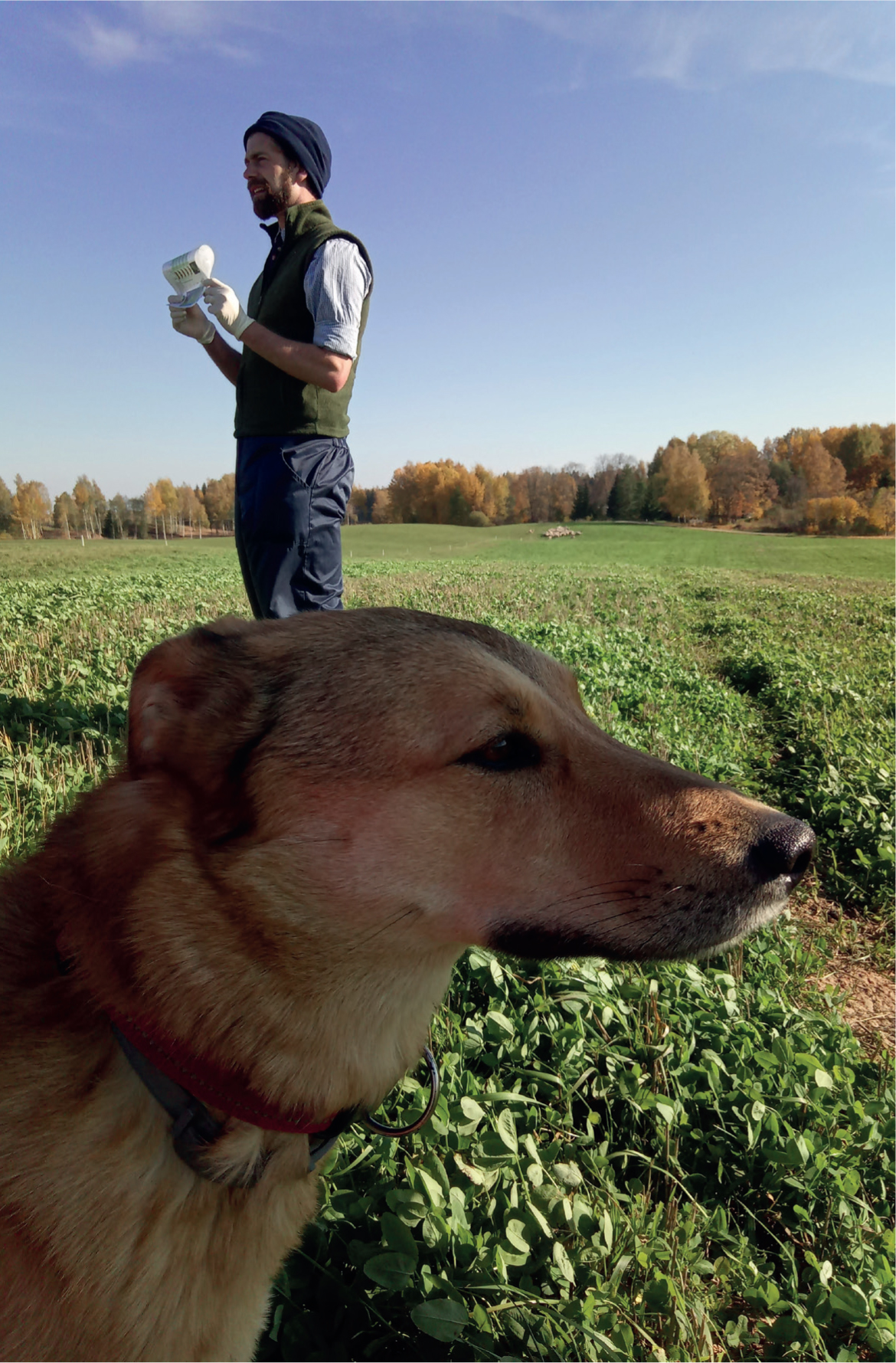Phyto-oestrogens are non-steroidal compounds produced by plants that mimic the effect of the hormone oestrogen. There are reports of phyto-oestrogens having profound impacts on female reproductive performance — particularly in sheep — however, they do not appear to affect male fertility. Similarly, the sensitivity of different species to phyto-oestrogens is varied, with ruminants much more susceptible to their reproductive effects than humans. Owing to their high feed value (protein levels in particular), drought tolerance and ability to fix nitrogen, interest in the inclusion of legumes (especially red clover) in seed mixes for grazing leys and silage production has increased. As a result, there is an increased focus on the potential risk that phyto-oestrogens pose to livestock.
What are phyto-oestrogens?
Phyto-oestrogens are all non-steroidal compounds that can bind to oestrogen receptors. The compounds found in plants of agricultural and veterinary importance include isoflavones and coumestans. The effect of phyto-oestrogens on different species varies with the endogenous oestrogen activity of those species. In cattle and sheep, endogenous oestrogen levels are low, so phyto-oestrogens display an oestrogenic effect. In humans, with higher endogenous oestrogen levels, phyto-oestrogens act as oestrogen antagonists.
Which plants produce phyto-oestrogens?
Phyto-oestrogens are produced by many plants, but the species which commonly form part of ruminant diets are the legumes, especially clovers and lucerne (Saloniemi et al, 1995). The presence and impact of phyto-oestrogens in clovers was first reported in subterranean clover (Trifolium subterraneum) in Australia in the 1940s (Bennetts et al, 1946; Schinckel, 1948). Subterranean clover is native to north-west Europe, but is not commonly sown in the UK. Red clover (Trifolium pratense) (Figure 1) produces four different phyto-oestrogen compounds of the isoflavone class: genistein, daidzein, biochanin A and formononetin. Within 7–10 days, the rumen fauna adapt to phyto-oestrogen and genistein and biochanin A are rapidly degraded, but formononetin and daidzein are converted to the potent oestrogen equol. White clover (Trifolium repens) (Figure 2) usually has lower levels of phyto-oestrogens; it contains many of the compounds seen in red clover, as well as coumestrol. Lucerne (also known as alfalfa) (Medicago sativa) also contains coumestrol. Other pasture legumes, like black medic, birds foot trefoil, and vetch, contain much lower levels of phyto-oestrogens. In humans, soybeans (Glycine max) and their derivatives are considered a major source of phyto-oestrogens. Other leguminous pulses (peas and beans) have much lower levels.


In clovers, the phyto-oestrogen levels vary with cultivar (Cunningham and Hogan, 1954; Adams and Croker, 1987; Sivesind and Seguin, 2005; Mustonen et al, 2018), and stress (such as viral or fungal infection, drought or other adverse weather conditions) tends to result in an increase in concentrations (Jones and Ferris, 2001; Sivesind and Seguin, 2005; Reed, 2016; Mustonen et al, 2018). In red clover, the levels of phyto-oestrogens tend to peak prior to flowering and decline thereafter; however, they do increase again at the end of the growing season (Sivesind and Seguin, 2005; Mustonen et al, 2018). In subterranean clover, levels are higher in spring than in autumn (Cunningham and Hogan, 1954). In Finland, levels also increased the further north the plant was grown (Mustonen et al, 2018). When cut for silage, levels tend to be higher in second cut than first cut, and are greater when the cuts are close together (Mustonen et al, 2018). In white clover, by contrast, levels of phyto-oestrogens tend to remain steady throughout the growing season. In red clover, the levels of phyto-oestrogens are highest in leaves, and lower in stems and flowers (Sivesind and Seguin, 2005)
Coumestan levels in healthy lucerne tend to be low, but levels increase in response to stress, reaching 90 mg/kg coumestrol in response to aphid infection and 600 mg/kg in lucerne stressed by foliar disease. Unlike isoflavone levels in red clover, coumestrol levels remain constant in senescent plant material (Reed, 2016).
Impact of conservation of forage on phyto-oestrogen levels
Studies of the impact of forage conservation on phyto-oestrogen levels have given mixed results. Most agree that during the wilting phase of silage production the concentration of phyto-oestrogens rises (Sarelli et al, 2003; Moravcová et al, 2004; Daems et al, 2016). Some state that in red clover isoflavone concentrations then decline during the first 2 weeks of the ensilement phase (once air has been excluded and anaerobic fermentation has begun), after which it remains steady (Daems et al, 2016), whereas others found that diminution was limited and because of the wilting, the concentrations of formonentin was higher in silage than fresh red clover (Sarelli et al, 2003). In lucerne silage, coumestrol content declined during ensilement, with only small amounts remaining after 50 days (Moravcová et al, 2004). Different silage additives had varying effects on the concentration of phyto-oestrogens (Sarelli et al, 2003).
Phyto-oestrogenism in sheep
Phyto-oestrogenism has been most thoroughly researched in sheep. The impact of phyto-oestrogens is greater in pre-pubertal and pubertal ewe lambs than in adult ewes. Exposure to phyto-oestrogens results in mammary development and an increase in the weight of the reproductive tract (Nwannenna et al, 1995; Peers-Adams, 2015). There have been varying reports regarding whether the vulva becomes more red when sheep graze phyto-oestrogens (Nwannenna et al, 1995). Research has noted a decrease in the ovulation rate and therefore in the frequency of multiple births (Coop and Clark, 1960; Kelly et al, 1980; Ramòn et al, 1993). Reduced conception rates, and increased embryonic loss, have also been reported (Coop and Clark, 1960; Kelly et al, 1980; Shackell and Kelly, 1984; Adams, 1995). In the late 1980s, barren rates in ewes grazing on subterranean clover pastures in Western Australia reached 20% (Adams and Croker, 1987). The mean decrease in lambs born/ewe in ewes grazing lucerne compared with non-oestrogenic pasture was 10–13% (Coop and Clark, 1960; Reed, 2016). Commonly, cyclicity remains unaffected and no external signs are seen (Adams, 1995), but some reports suggest a lower percentage of ewes being mated during the first cycle period with the rams, suggesting reduced cyclicity (Coop and Clark, 1960; Kelly et al, 1980). This infertility, seen in ewes grazing oestrogenic pastures over tupping, resolves within 1 month of removal from the phyto-oestrogen source (Adams, 1995).
In ewes, and especially ewe lambs, that graze oestrogenic pastures for prolonged periods, permanent changes to the cervix occur (the mucosa changes to become more similar to the uterus) (Cantero et al, 1996). These interfere with sperm storage and transport; consequently, more services are required for ewes to become pregnant and the barren rate increases. Clitoral enlargement and partial fusion of the lower lips of the vulva may also occur (Adams and Croker, 1987). There is a correlation between the proportion of ewes affected by these changes (as well as their severity), and the barren rates seen (Adams and Croker, 1987). These changes appear to be cumulative, and the barren rate of ewes grazing subterranean clover pastures for several years have been shown to increase with each year of exposure (Marshall et al, 1971).
There appears to be some heredity of susceptibility to the effects of phyto-oestrogens (Adams and Croker, 1987). The phyto-oestrogen content of the grazed legume, as noted, varies considerably with cultivar, and low oestrogenic varieties have been repeatedly found to have no negative impacts on reproductive performance (Pace et al, 2011). Where high-formononetin strains of red clover formed less than 30% of the sward, no significant effects were noted (Shackell and Kelly, 1984). Even some studies comparing red clover pasture/silage to grass pasture/silage noted no difference in reproductive performance (Shackell and Kelly, 1984; Mustonen et al, 2014), though uterine mass and volume of foetal fluids were affected (Mustonen et al, 2014).
Reports on ‘clover disease’ resulting from sheep grazing high-phyto-oestrogen strains of subterranean clover also reported higher rates of dystocia and uterine prolapse (Marshall et al, 1971). Various authors have speculated as to whether high levels of phyto-oestrogens could be a risk factor for vaginal prolapse (Pugh, 2002; Miesner and Anderson, 2008), based on the reasoning that high levels of oestrogens result in relaxation of pelvic ligaments and surrounding soft tissue. Some have also reasoned that the greater levels of fetal fluids present in sheep grazing oestrogenic pastures could increase intra-abdominal pressure and therefore increase the risk of vaginal prolapse (Mustonen et al, 2014).
Phyto-oestrogens have anabolic effects, and stimulate protein deposition and liveweight gain. Trials have detected better growth rates in wether lambs fed lucerne with higher coumestrol levels, but not in ewes (Reed, 2016). These effects can be seen even when the levels of phyto-oestrogens are low enough not to disrupt reproductive function. Pace et al (2006) compared lambs fed iso-energetic and iso-proteic diets based respectively on Italian ryegrass and low-oestrogen cultivars of subterranean clover, and found better liveweight gain in both male and females. There is no evidence that phyto-oestrogens affect ram fertility.
Phyto-oestrogenism in cattle
Cattle are less sensitive to the reproductive effects of phyto-oestrogens than sheep. They have a lower concentration of oestrogen receptors in the uterus (2- to 4-fold lower), and faster conjugation and metabolism of phyto-oestrogens (Braden et al, 1971).
Poorer fertility in cattle on oestrogenic pastures or fed red clover silage has been reported (Kallela et al, 1984). This is thought to be due to anovulation and the development of cystic follicles (Adams, 1995). By contrast, other studies reported no negative impact on fertility of heifers fed red clover silage (Austin et al, 1982). Progesterone concentrations are lower in cattle on high phyto-oestrogen diets; this is thought to increase early embryo mortality (Woclawek-Potocka et al, 2013). There is no evidence that phyto-oestrogens affect bull fertility.
Phyto-oestrogen impacts on human health
In humans, there is considerable interest in the effect of dietary phyto-oestrogen levels in reducing the risk of certain health conditions, including breast and prostate cancers (Duncan et al, 2003). These phyto-oestrogens mainly derive from plant sources such as in particular soybeans. There is some debate about whether phyto-oestrogens in soya-based milk formulae for young infants affects sexual and neuroendocrine pathways (Duncan et al, 2003; Cederroth et al, 2010); currently, it appears to be of concern only in babies with congenital hypothyroidism (Testa et al, 2018).
Given the potential impacts on human health, there is research into phyto-oestrogen levels in cow's milk, and the impact of bovine diet on milk phyto-oestrogen levels (Andersen et al, 2009).
Detection and diagnosis
Suspicion of phyto-oestrogenism is raised by clinical signs in conjunction with a consistent feeding history. It is important that the feeding history of first-time breeding/calving/lambing animals with problems is taken back as far as birth, because of the cumulative and irreversible effects that can occur.
Phyto-oestrogen levels can be measured in forage by a variety of laboratory assays. It is possible to detect phyto-oestrogen activity in pastures/conserved forages, by detecting the oestrogenic impact on udder development. Wether lambs or ewe lambs that are not intended for breeding use can be put onto the suspect pasture or feed for several weeks. Changes in teat length and width are recorded, and mammary development can be subjectively assessed. Teats of animals grazing oestrogenic pastures are reported to be around 2.5 mm longer, and approximately 4 mm wider, than those grazing non-oestrogenic pastures (Oldfield et al, 1966; Braden et al, 1971; Nwannenna et al, 1995; Galbraith et al, 1997; Peers-Adams, 2015). In some cases, the increase in teat length and width can be as much as 4 and 2 cm respectively, and wethers can begin to lactate (Cunningham and Hogan, 1954). Detectable changes occur within 6 days of grazing oestrogenic pasture (Braden et al, 1971). Peers-Adams (2015) found that the changes in teats of ewe lambs do not fully regress, even after removal from the oestrogenic pasture. This is in contrast to ewes, where regression occurs within 25 days of removal from red clover (Nwannenna et al, 1995).
At post-mortem examinaion, the bulbo-urethral glands of wethers, and the uterus of females are increased in size after grazing oestrogenic pastures (Cunningham and Hogan, 1954). Mammary development can also be assessed. The cervical mucosa is altered, being more similar in appearance to the uterus (Cantero et al, 1996).
Role of the veterinary surgeon
The veterinary surgeon should consider phyto-oestrogenism when confronted with a consistent history (e.g. poor reproductive performance, and exposure at relevant times to high levels of legume pasture/forage, especially red clover), and can guide the client in assessment of pasture/forage phyto-oestrogen levels. An example of a highly-suspicious farm history is given in Box 1.
Box 1.Farm history suggestive of phyto-oestrogenismThis is a description of a farm where the disease history is highly suggestive of phyto-oestrogenism affecting sheep reproductive performance.The farm is an organic, primarily arable farm with secondary beef and sheep enterprises, situated in southern Estonia. The farm makes extensive use of red clover in the arable rotation for nitrogen fixation, with the result that the livestock graze on pastures with a high percentage of red clover for large parts of the year, and are fed red clover silage over winter (alongside grass hay and silage, and barley). The flock is Lleyn and Lleyn X Texel.The farmer mentioned a very prolonged lambing period and very high barren rates at a visit in October. At the same visit, a ewe with a chronic vaginal prolapse was examined and euthanased as the prolapse could not be corrected. One of the fields that the ewes were being mated on can be seen in Figure 3.
Figure 3. The author in a field containing a high level of red clover on the farm described in Box 1.
The lambing results were obtained the following spring and are laid out below:
| Group | 1 | 2 | 3 | 4 | Total |
|---|---|---|---|---|---|
| Number of ewes | 61 | 160 | 50 | 49 | 320 |
| Number lambed | 44 | 139 | 44 | 33 | 260 |
| Number barren | 17 | 21 | 6 | 16 | 60 |
| Barren rate | 28% | 13% | 12% | 33% | 19% |
| Lambs born | 63 | 208 | 67 | 37 | 375 |
| Lambing % | 103% | 130% | 134% | 76% | 117% |
Groups 1, 2 and 3 had a ram:ewe ratio of 1:50, and the tupping period lasted from mid-August to late November. Group 4 consisted of ewe lambs, and was tupped from the beginning of December to the beginning of November.Divided by year of birth, the results for the ewes were as follows:
| Year of birth | Number of ewes | Number lambed | Number barren | Barren rate |
|---|---|---|---|---|
| 2013 | 2 | 1 | 1 | 50% |
| 2014 | 6 | 4 | 2 | 33% |
| 2015 | 12 | 7 | 5 | 42% |
| 2016 | 20 | 15 | 5 | 25% |
| 2017 | 37 | 30 | 7 | 19% |
| 2018 | 69 | 59 | 10 | 14% |
| 2019 | 54 | 47 | 7 | 13% |
| 2020 | 71 | 64 | 7 | 10% |
| 2021 | 49 | 33 | 16 | 33% |
The farmer also complained of a high stillbirth rate (13.3%: of the 375 lambs born, 325 were born alive); and lost several ewes to uterine prolapse. He also complained that there was a high rate of dystocia cause by ringwomb
Veterinary surgeons should also advise clients to exercise relevant caution in grazing pastures which may contain high levels of phyto-oestrogens at high risk times of year. It is important when doing this not to over-emphasise the risk posed by phyto-oestrogens, especially given the many advantages to the increased use of clovers in pasture or lucerne (e.g. nitrogen fixation, drought tolerance, higher protein content, better growth rate). Reminding clients that when ordering seeds, they should make clear that they wish for cultivars that have been bred for animal consumption, is also important.
Finally, this subject has been reported in the farming press on multiple occasions recently, and the headlines are often misleading compared with the actual results of the trials. The veterinary surgeon can assist their clients in grasping the true import of these reports, by applying their scientific training.
Conclusion
Many legumes that are grazed or ensiled produce phyto-oestrogens in varying amounts. If present in higher concentrations, and in particular if the phyto-oestrogen containing plant forms a significant percentage of the sward/silage, there can be negative impacts on health and production. The impact of red clover-related phyto-oestrogens, which are the type most likely to be encountered by the veterinary practitioner in the UK, are cumulative. Therefore, where red clover is present in high concentrations in sward or conserved forage, farmers should be advised to avoid feeding this to ewe lambs, or to ewes around tupping, for prolonged periods.
KEY POINTS
- Phyto-oestrogens are female hormone mimics produced by plants. Of particular interest to the veterinary surgeon is the phyto-oestrogen production of legumes.
- Red clover and lucerne are more likely to contain significant levels of phyto-oestrogens than white clover, but levels vary with cultivar, growth stage, growing conditions, weather, stress, disease and preservation (as hay or silage).
- Sheep are more prone to the reproductive disruption effects of phyto-oestrogens than cattle, and phyto-oestrogenism should be considered as a differential diagnosis for poor reproductive performance when grazing history suggests high levels of exposure to red clover or lucerne. Ram and bull fertility does not seem to be affected.
- Levels of red clover below 30% of pasture are unlikely to have negative effects on reproductive performance.
- Phyto-oestrogens exert an anabolic effect on growing lambs and so can improve growth rate and carcass composition.


